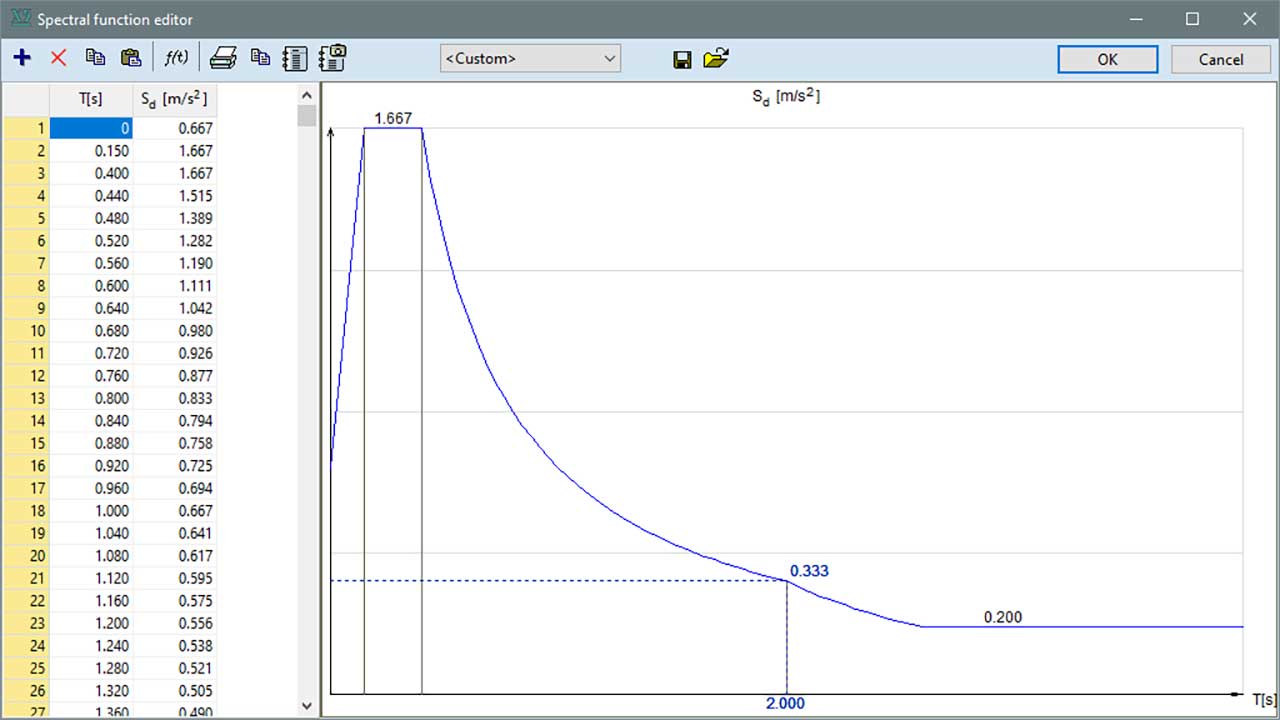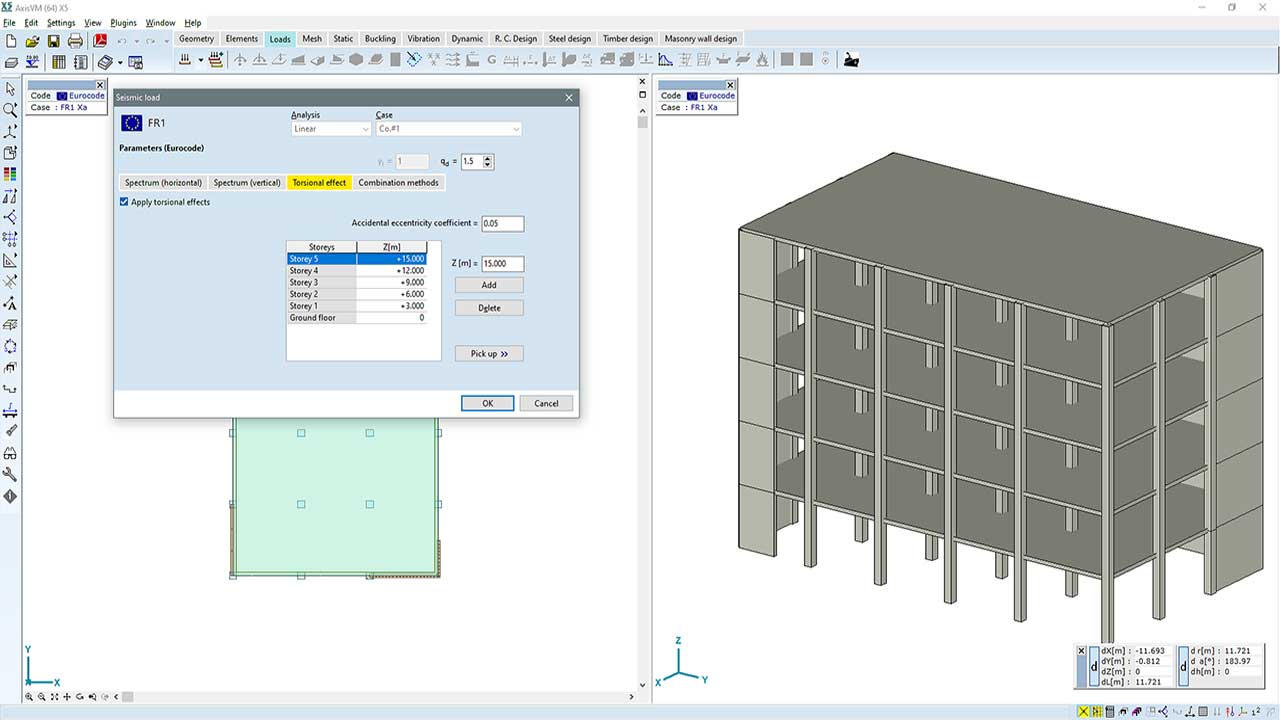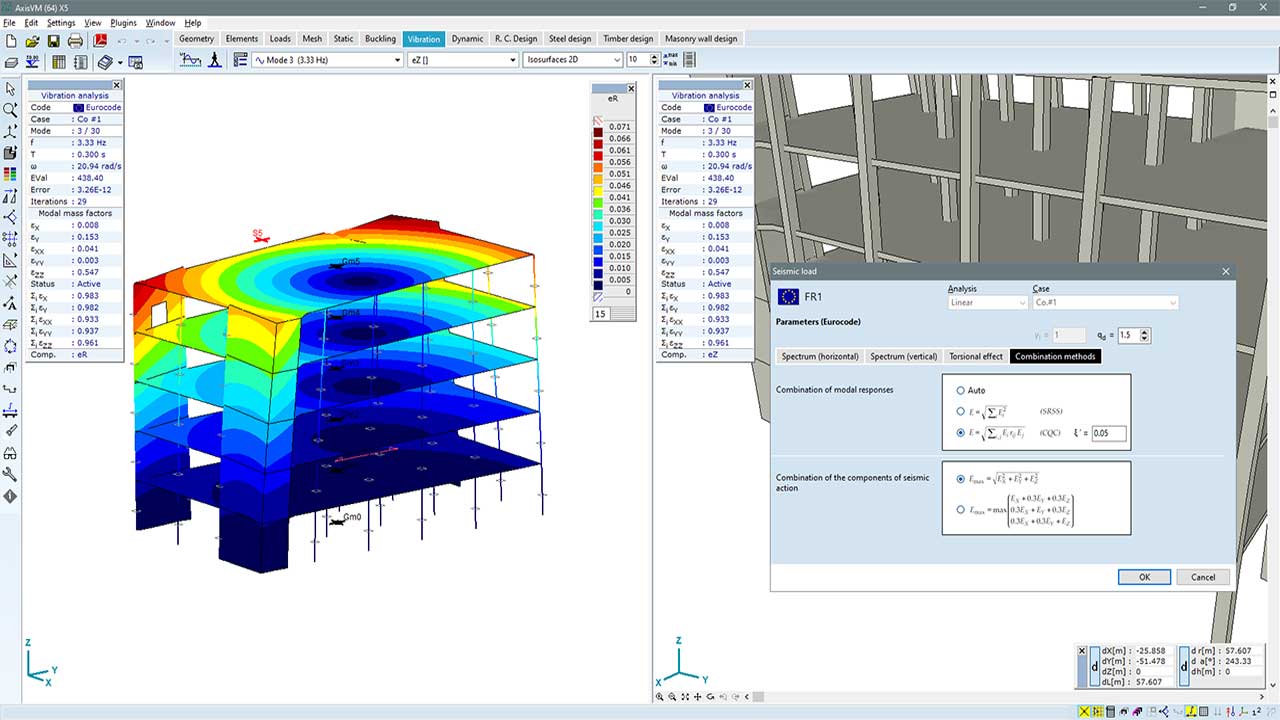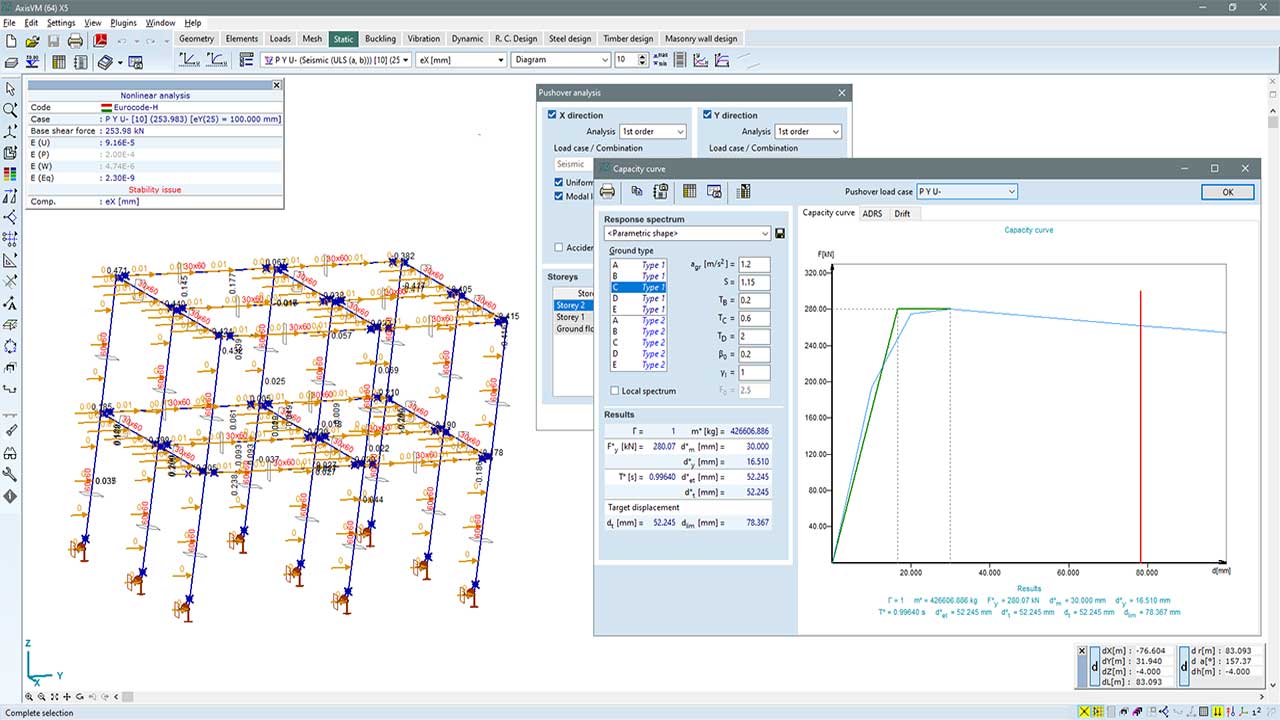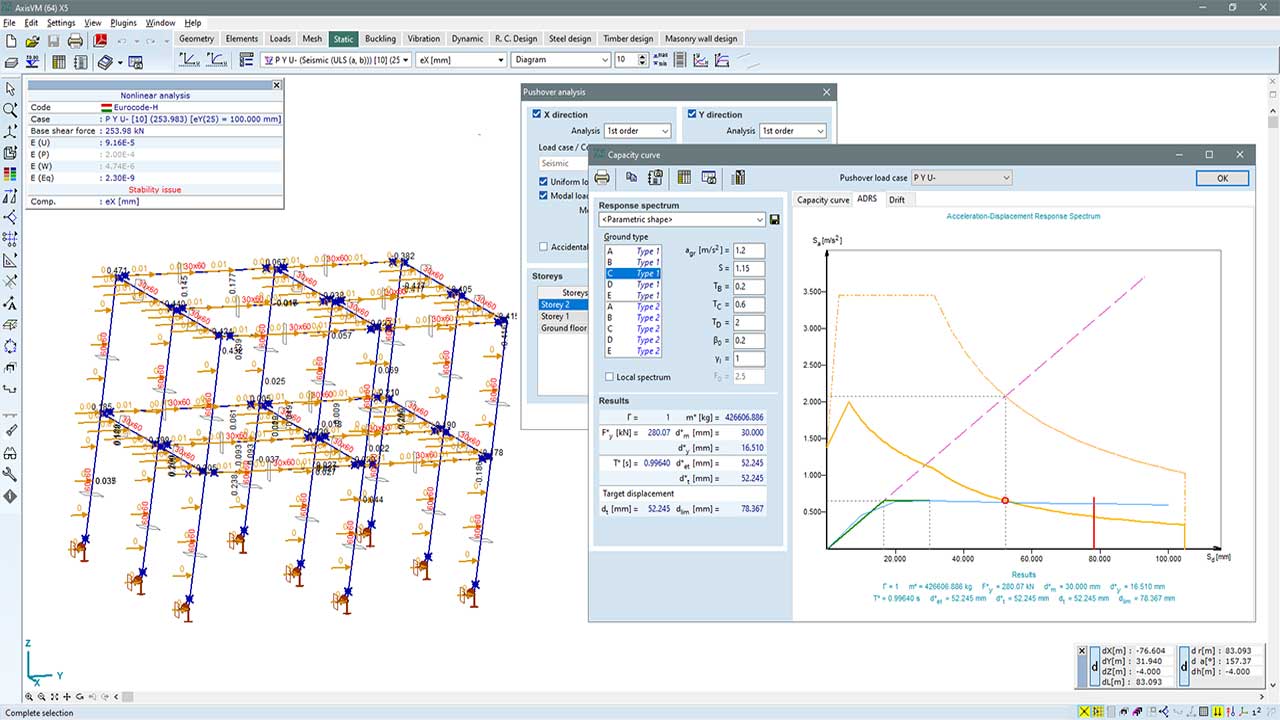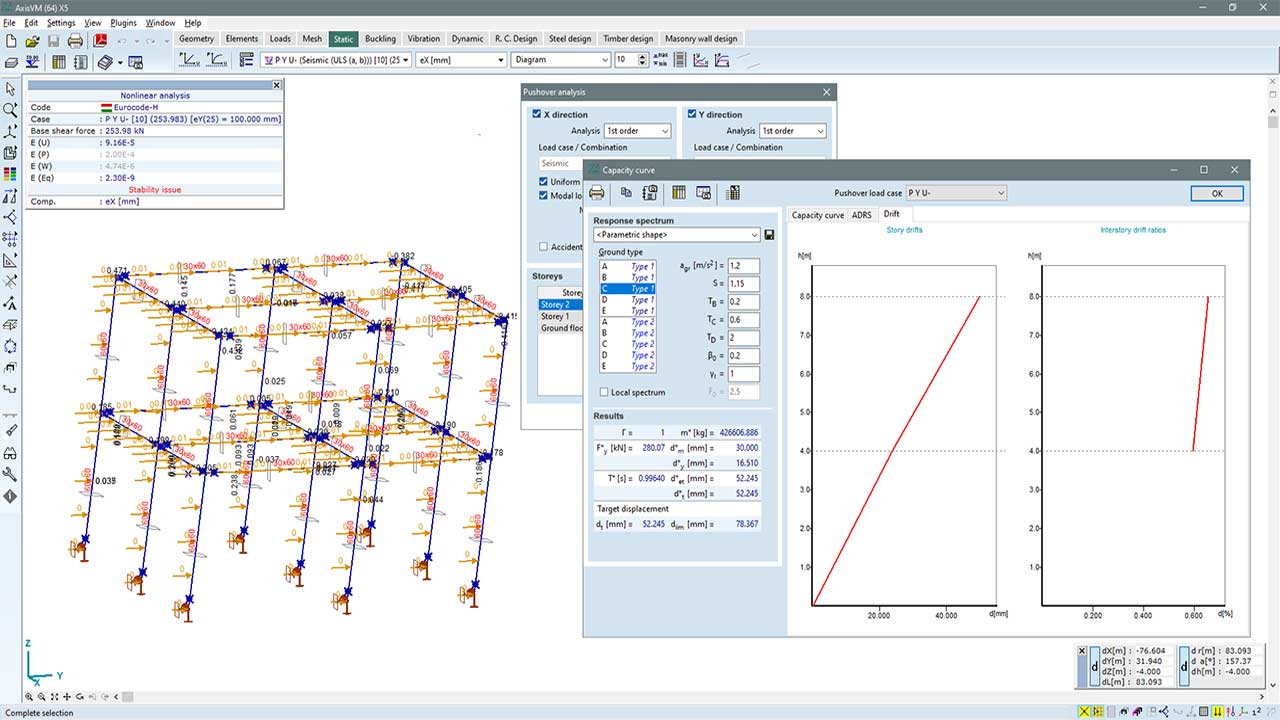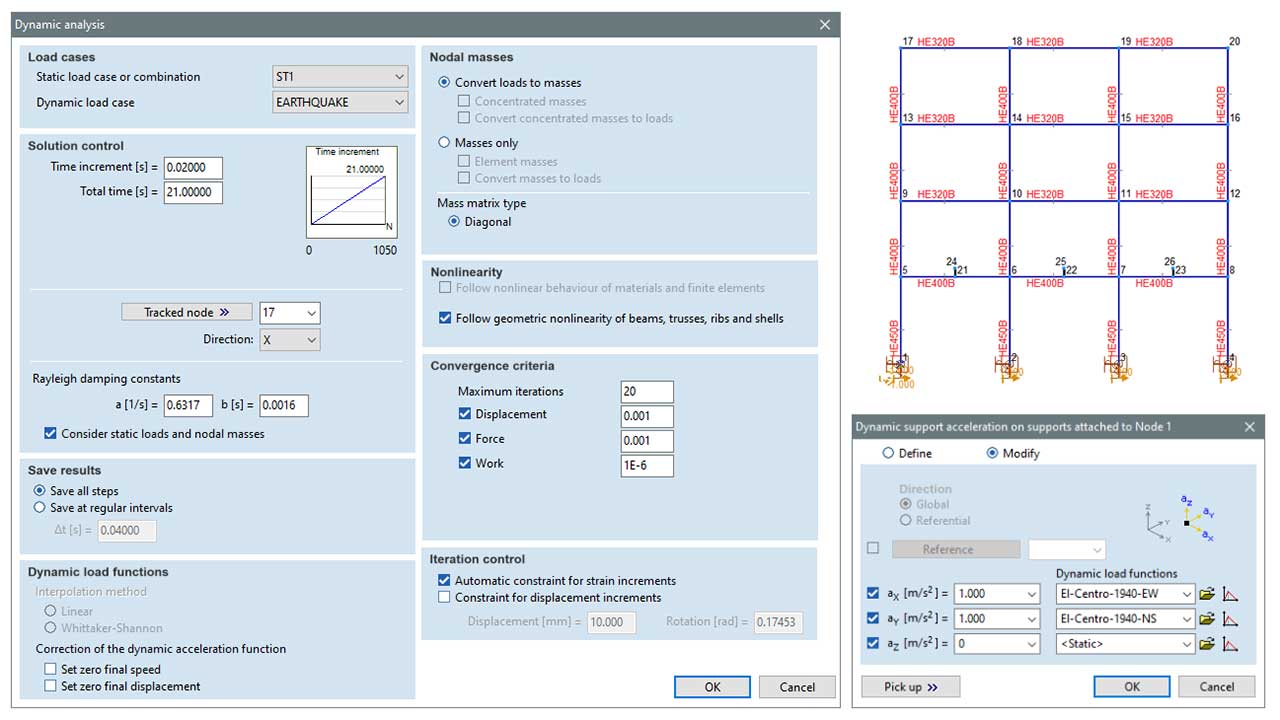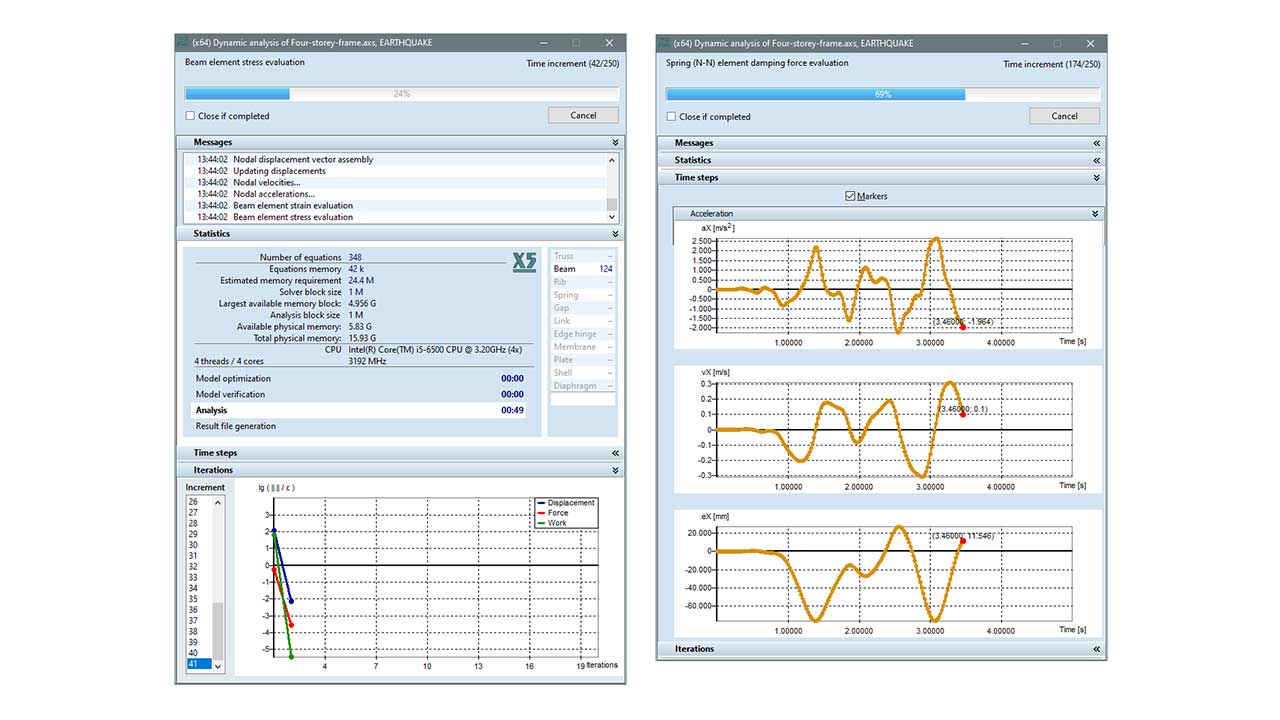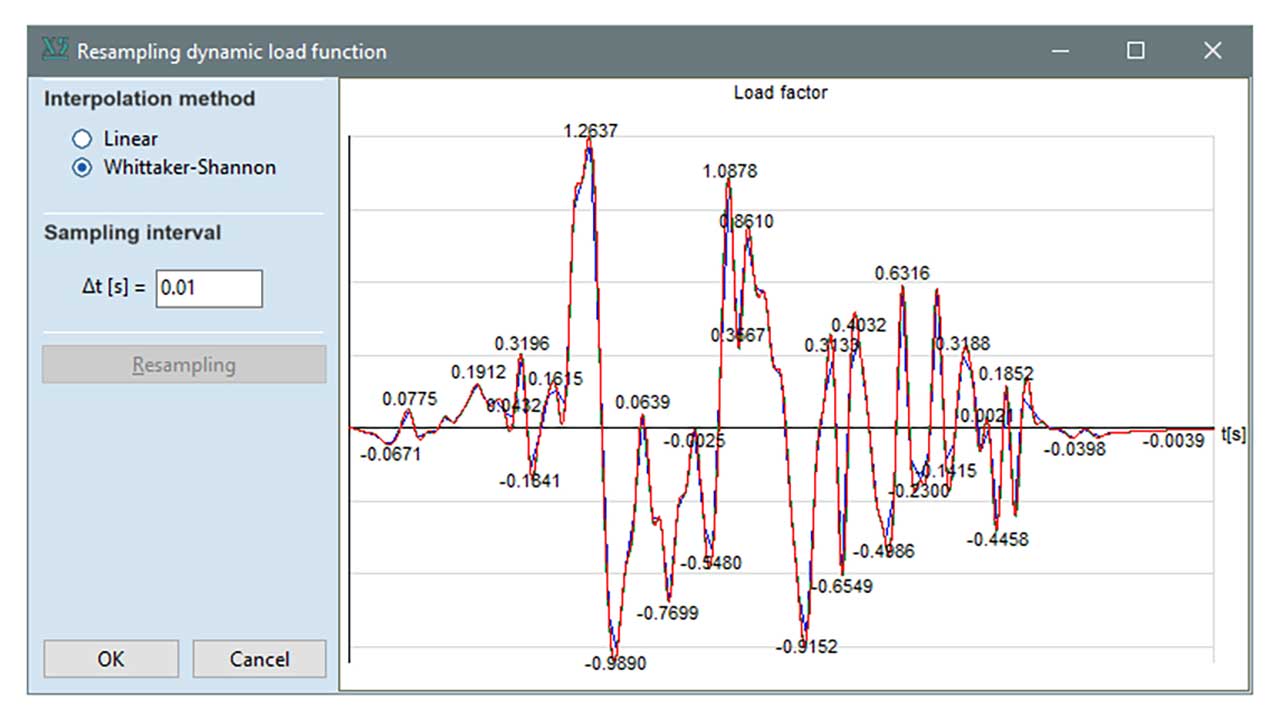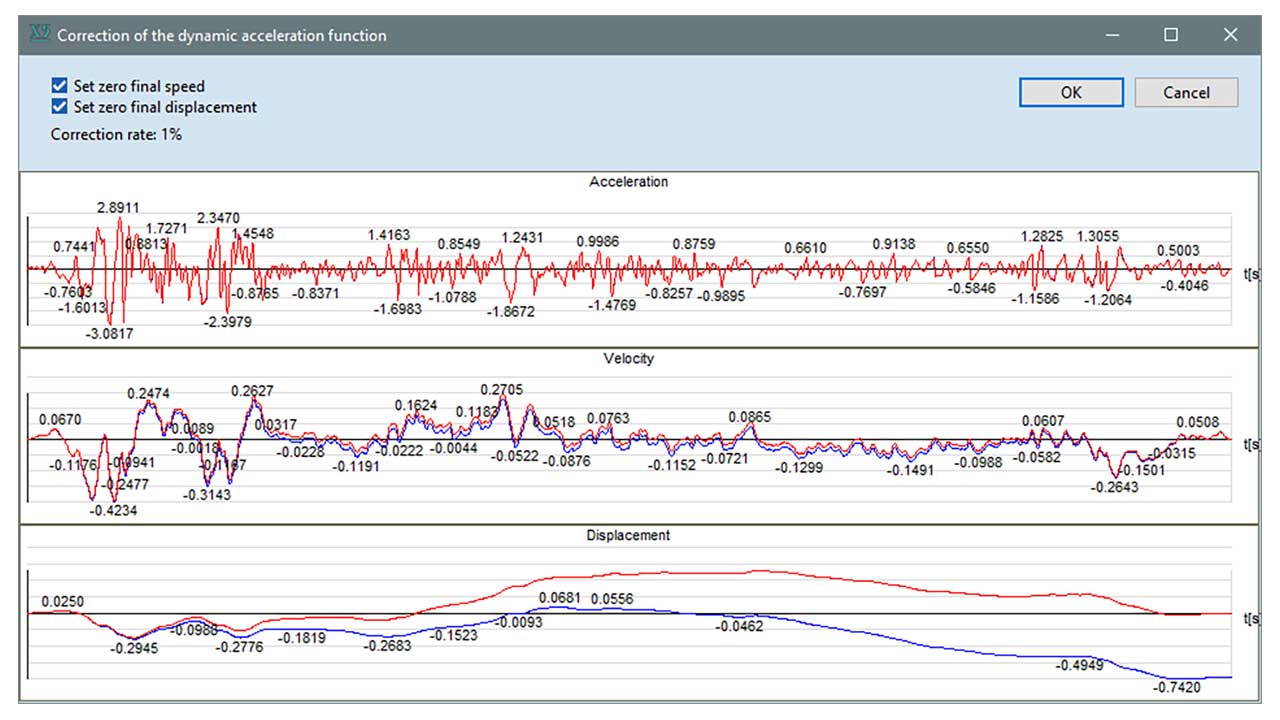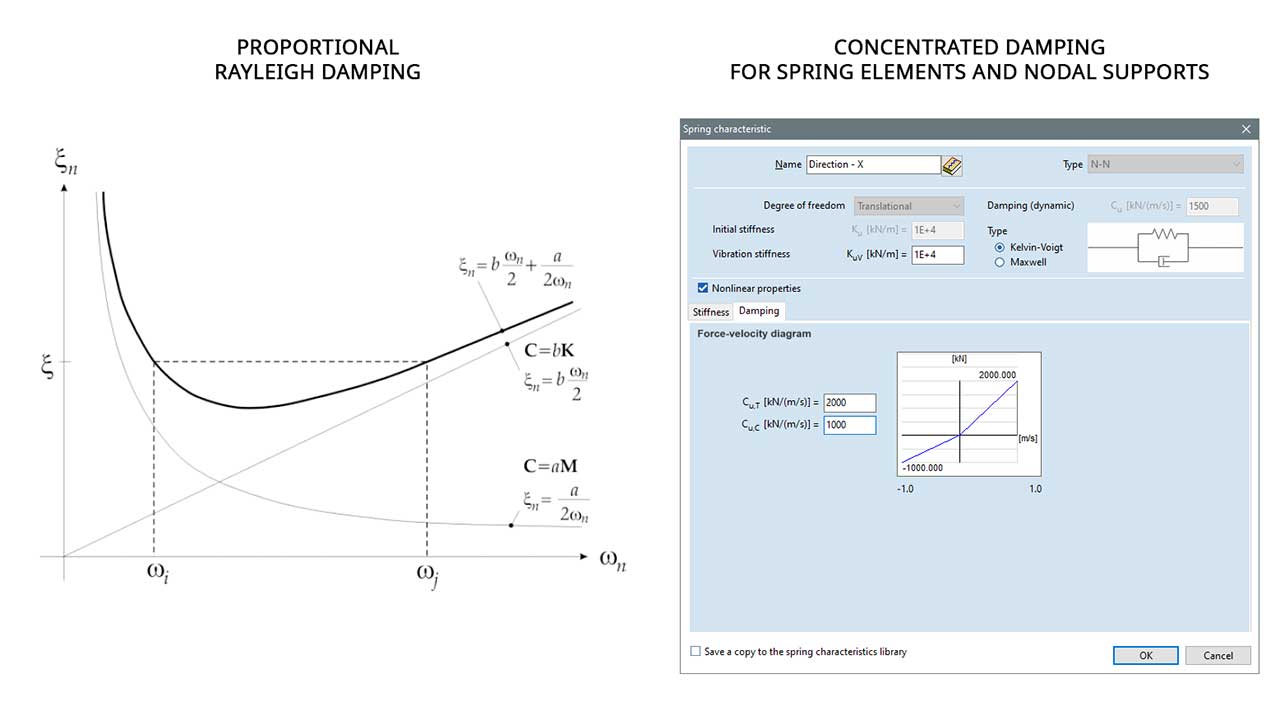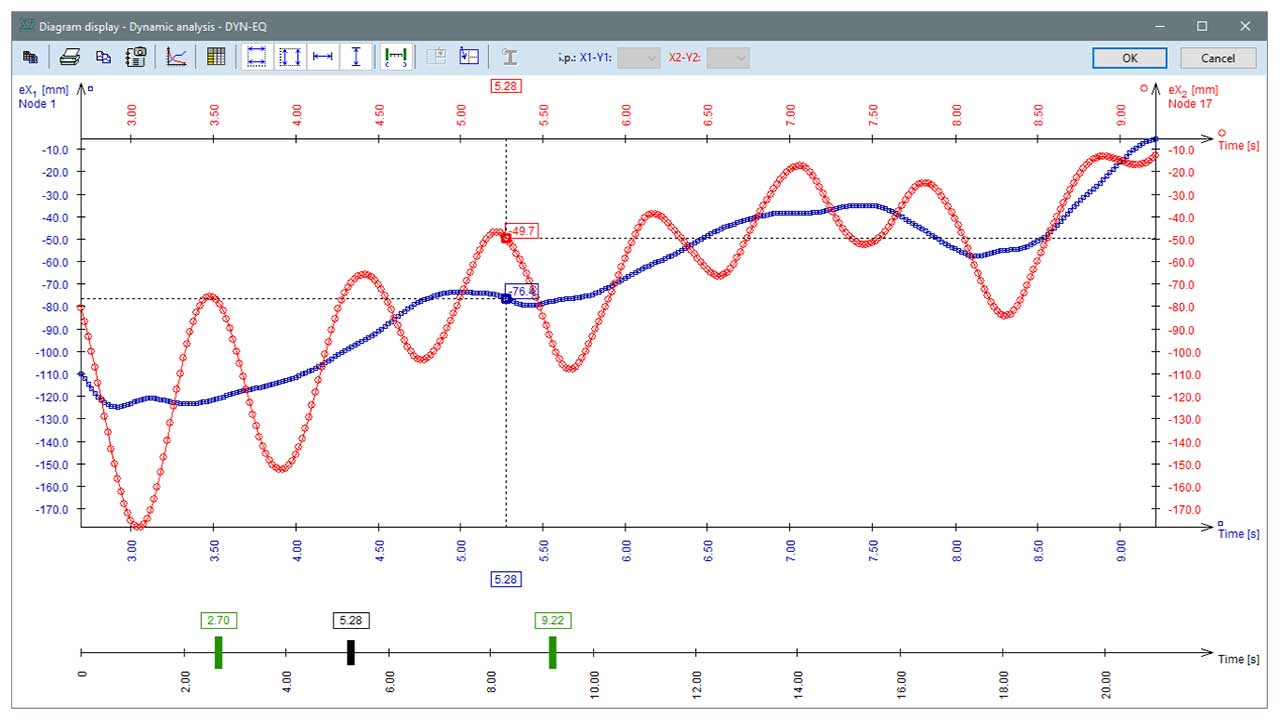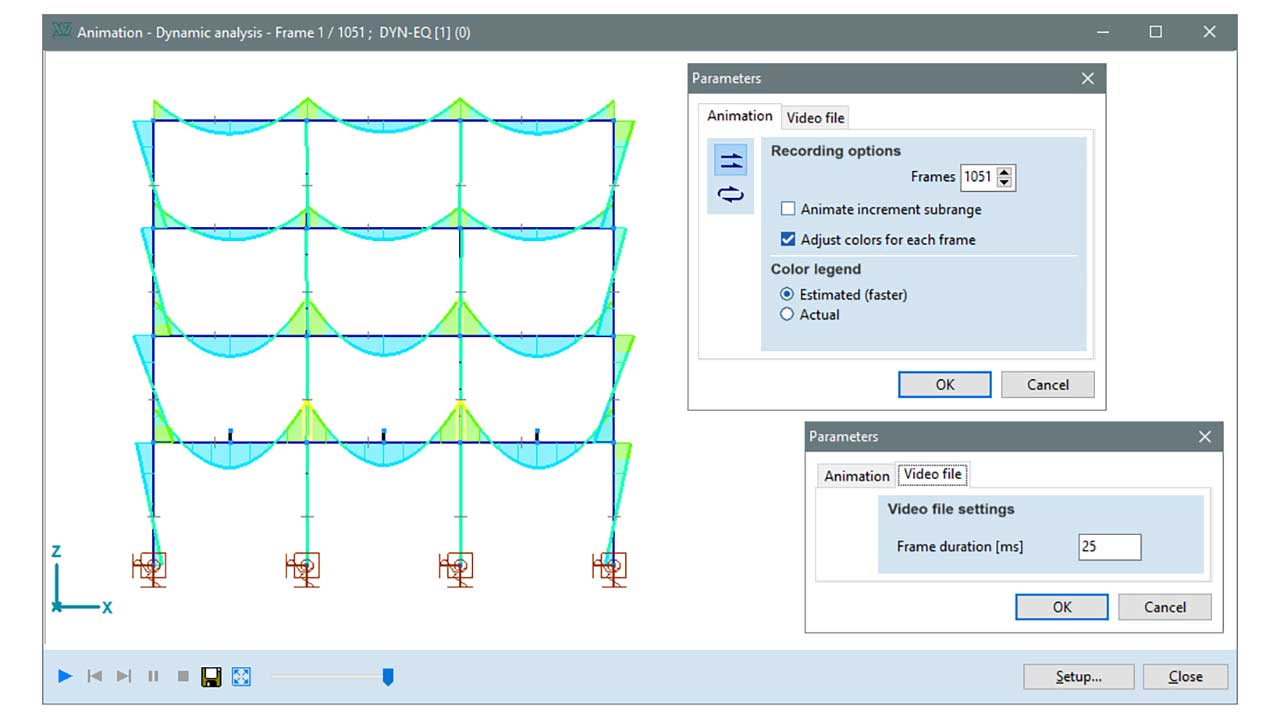SEISMIC DESING
Three modules, SE1, SE2, and DYN, are available in AXISVM for seismic analysis and design of structures: modal response spectrum analysis, pushover analysis, and time-history analysis, respectively. In modal response spectrum analysis, a standard conforming or user specified custom design spectrum can be used. The analysis takes into account torsional effects and different spectra can be selected for each global direction. With pushover analysis, the non-linear response of the structure can be obtained, taking into account geometrical and material non-linearities, non-linear finite elements, and plastic hinges.
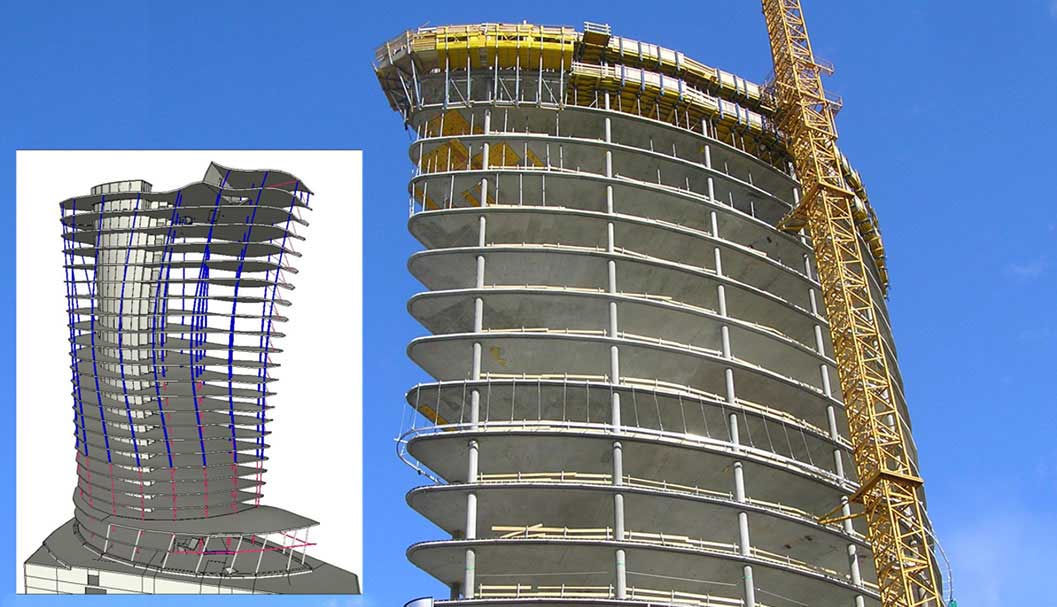
SE1 MODULE
Moda response spectrum analysis
SE2 MODULE
Pushover analysis
DYN MODULE
Punching and shear design of RC slabs
SE1 MODULE
The SE1 module includes several tools that facilitate the execution of Modal Response Spectrum Analysis (MRSA) in AxisVM. The tools automatically perform seismic load generation in three orthogonal directions for each vibration mode, the computation of the structural response for each vibration mode, and the combination of the modal responses into a governing seismic effect. Results from individual modes can be combined using either the Square Root of Sum of Squares (SRSS) or the Complete Quadratic Combination (CQC) method. The program calculates additional torsional moments about the vertical axis for every storey and mode shape. The magnitude of torsional moments depends on the horizontal load and eccentricity of each storey.
Requirements / recommendations
- the SE1 module can only be used for linear analysis
- the use of SE2 or DYN modules is recommended if non-linear analysis is required
DESIGN CODES
Eurocode8
EN 1998-1
Swiss standard
SIA 261
Italian standard
NTC
CHARACTERISTICS
- seismic effects can be given via code conforming or a user defined custom spectrum
- consideration of torsional effects on each storey
- X* and Y* directions of seismic excitation can be defined with the help of seismic excitation angle
- an arbitrary number of seismic load groups can be created in the model
- different spectra can be used in global X, Y and Z directions
- displacement behaviour factor
- optimal SRSS or CQC summation rules
- capacity design is available for concrete beams and columns
DETAILS
CUSTOM DESIGN SPECTRUM
In AxisVM, both standard conforming and user specified custom design spectra can be used to define seismic effects at the investigated site. Custom spectra are defined in the Spectral function editor after setting the Design spectrum from Parametric shape to Custom. Spectra are created in the editor by a piecewise linear approximation of the spectral shape over a list of pre-defined natural periods (T) – spectral acceleration coordinate (Sd) pairs.
TORSIONAL EFFECTS
In order to consider torsional effects in the seismic analysis, storeys of the structures and the value of accidental eccentricity need to be defined. The magnitude of torsional moments depends on the horizontal load and eccentricity of each storey. Horizontal loads are retrieved from load cases corresponding to each vibration mode and horizontal direction. Torsional moments are considered with either + or – signs, but always with the same sign at all storeys.
SUMMATION RULES
AxisVM calculates and displays absolute drifts and relative storey displacement (interstory drift) ratios. The diagram of absolute drift shows the horizontal displacement of
AxisVM provides control over the combination of results for individual modes and individual directions. Results from individual modes can be combined using either
- the Square Root of Sum of Squares (SRSS) or
- the Complete Quadratic Combination (CQC)
method.
The latter is considered more appropriate if the vibration modes of the structure are not well separated (i.e. vibration frequencies are close to each other). Results in the two horizontal and the vertical directions can be combined using either of the two commonly used combination methods, namely with SRSS or 30% rules.
SE2 MODULE
Pushover analysis is a non-linear static seismic analysis method that can be used in case of structures with a dominant vibration shape. It can be used to obtain the non-linear response of a structure that is described with the so-called capacity curve. Pushover analysis is mainly used to design dissipative structures or to assess the performace of existing structures. In case of dissipative structures, plastic hinges are designed in order to ensure the dissipation of seismic energy via plastic behaviour.
In AxisVM, non-linear, plastic materials, non-linear finite elements, non-linear supports, and concentrated plastic hinges are available to characterize the non-linear structural behaviour.
Requirements / recommendations
- at least NL1 configuration is required for non-linear analysis
DESIGN CODES
Eurocode8
EN 1998-1
Italian standard
SIA 261
Swiss standard
NTC
CHARACTERISTICS
- uniform and modal load distibution
- different analysis parameters can be defined in X and Y directions
- options and tools to model structural non-linearity
- concentrated plastic hinges
- effects of accidental eccentricities and the resultant torsional moments may be included
calculation of target displacement - calculation of ADRS spectrum
- calculation of interstory drifts
DETAILS
TARGET DISPLACEMENT
Target displacement is calculated based on the elastic spectrum and capacity curve with the help of the so-called N2 method recommended in Appendix B of Eurocode 8.
The design value of seismic forces may be read from the capacity curve at target displacement level. Dissipative zones need to be checked in terms of deformations related to target displacement, while non-dissipative elements need to be checked in terms of load bearing capacity, including overstrength. Deformation capacity of the structure has to exceed the target displacement by 50%.
ADRS SPECTRUM
INTERSTOREY DRIFTS
AxisVM calculates and displays absolute drifts and relative storey displacement (interstory drift) ratios. The diagram of absolute drift shows the horizontal displacement of the center of gravity of storeys relative to the ground. The interstorey drift ratio diagram shows the interstorey drift expressed as a percentage of the storey height. The latter diagram helps to check if the structure meets the drift limit requirements of the selected design code.
DYN MODULE
In the case of dynamic analysis, the program determines the displacements and internal forces of the structure for each time step, corresponding to the defined dynamic loads. The analysis can be carried out by considering linear or nonlinear material behavior. Geometric nonlinearity can also be considered.
The following dynamic actions can be applied:
dynamic point load acting on a node, domain, or load panel
distributed surface load on a domain or load panel
node or nodal support acceleration
With these dynamic loads, the DYN module is able to conduct time-history analysis (e.g. earthquake), shock wave analysis (e.g. blast), and forced vibration analysis (e.g. machinery).
Requirements / recommendations
in order to perform nonlinear dynamic analysis, the nonlinear (NL) basic package is needed
DESIGN CODES
The DYN module is independent from design codes/standards.
CHARACTERISTICS
- the time integration is carried out by the Newmark-beta implicit numerical method
- geometric and material nonlinearity can be taken into account
- the dynamic load functions can be defined by either numerical data at sampling points, or by analytical functionsá
- the intermediate points of the load function can be determined with linear or Whittaker-Shannon interpolation
- the accelerograms can be corrected in order to obtain zero end speed and displacement
- the internal forces can be used in standardized design procedures, with caution
DETAILS
THE PARAMETERS OF DYNAMIC ANALYSIS
RUN-TIME MONITORING
THE INTERPOLATION OF LOAD FUNCTIONS
If the sampling points of the load function are not coinciding with the time steps, the program interpolates the function value at a given instance of time with linear interpolation or with the Whittaker-Shannon formula. The latter can approximate a continuous function, which is better discretised with uniform time steps.

